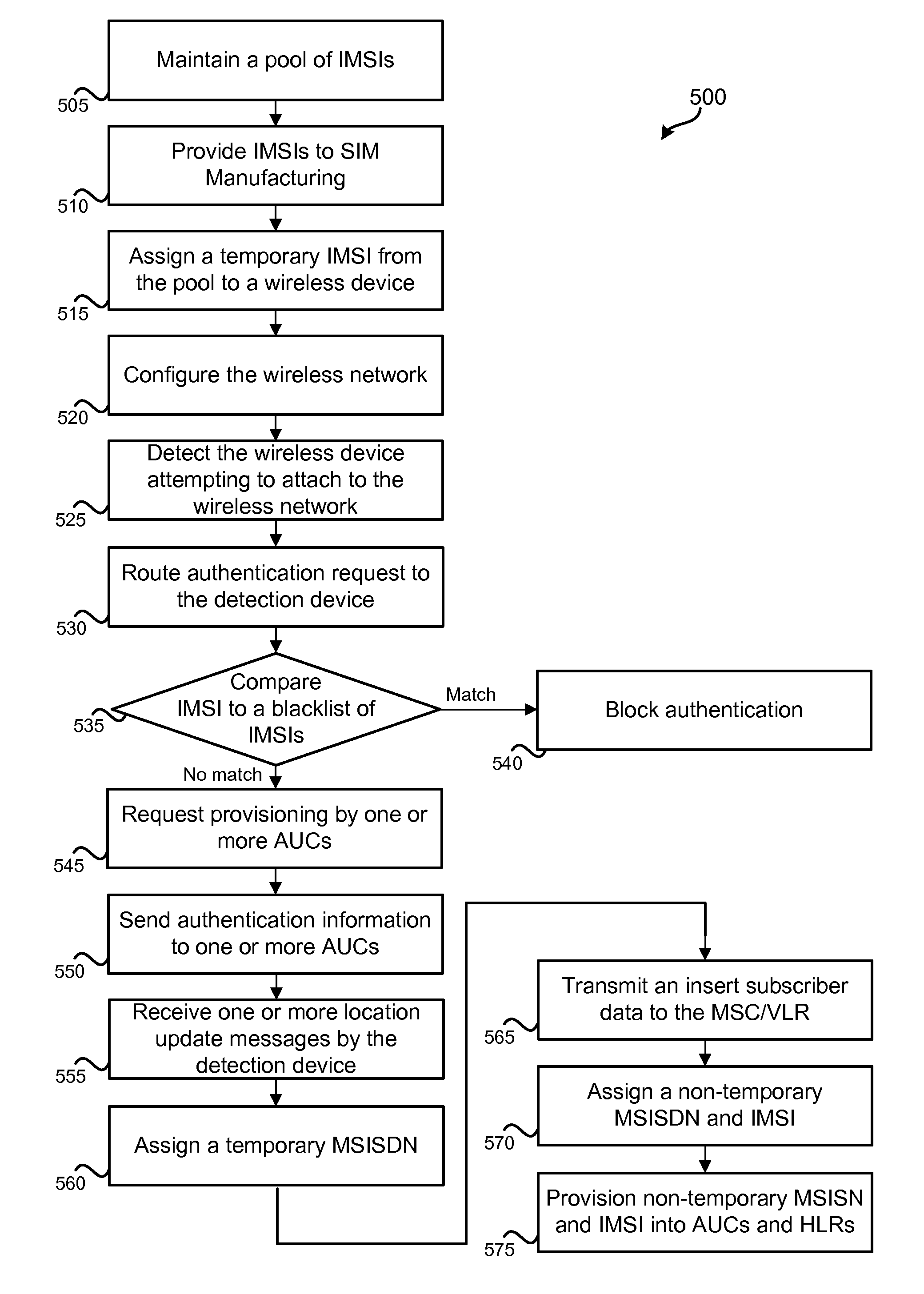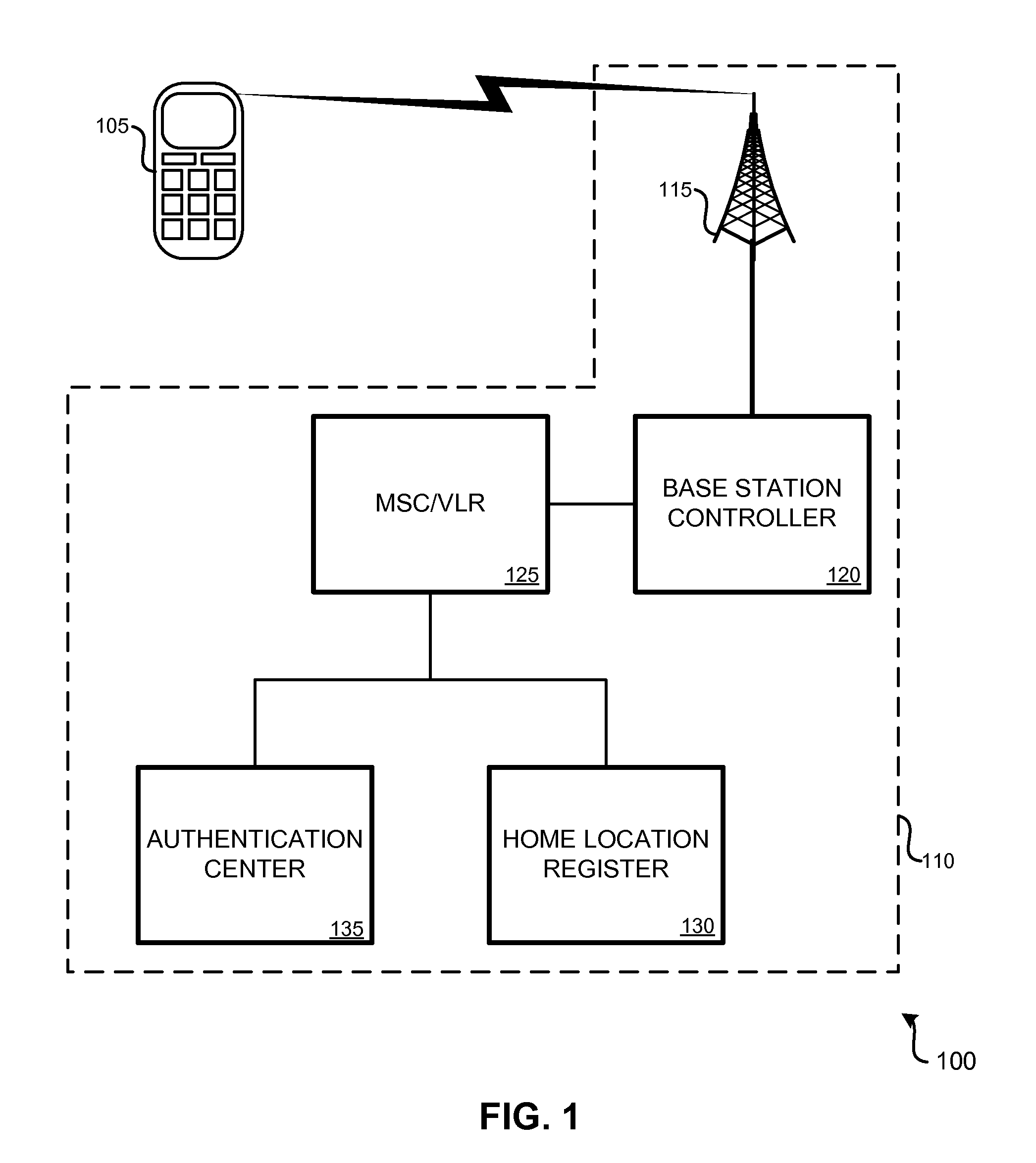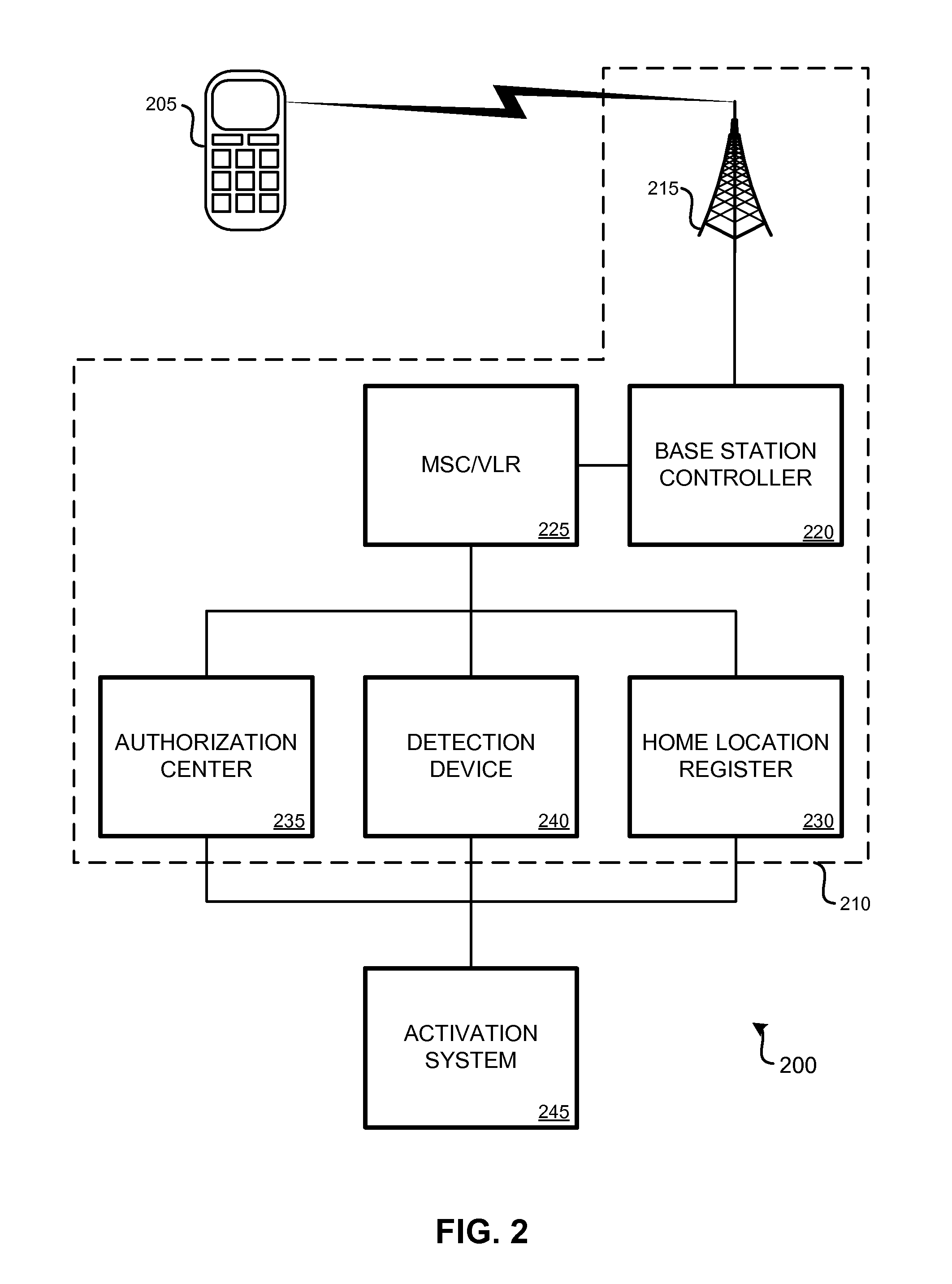Extended wireless device activation
a wireless device and activation technology, applied in the field of extended wireless device activation, can solve the problems of supply chain leakage, supply chain leakage, supply chain “leakage, etc., and achieve the effect of increasing the risk of theft and ensuring the integrity of the network
- Summary
- Abstract
- Description
- Claims
- Application Information
AI Technical Summary
Benefits of technology
Problems solved by technology
Method used
Image
Examples
embodiment 200
[0037]A mode of operation of embodiment 200, and, in particular, detection device 240 and activation system 245, is described in detail below. In a general sense, however, a set of embodiments provides a detection device that is configured to act as a “quasi-HLR.” In other words, the detection device (which is not an HLR 130 and generally does not perform the functions of an HLR 130), is configured to be seen by wireless network 210—and, in particular the MSC 225—as the HLR for an unactivated wireless device 205. Hence, when unactivated wireless device 205 attempts to register with wireless network 210, MSC / VLR 225 queries detection device 240, rather than HLR 230, for data about wireless device 205. MSC / VLR 225 may query detection device 240 instead of HLR 230 based on a temporary IMSI of wireless device 205. For example, IMSIs in a particular range may be configured for routing to detection device 240. Detection device 240, in turn, may contact activation system 245, which is resp...
embodiment 300
[0038]In some embodiments, such activation techniques form the basis for a method of manufacturing and / or distributing SIMs (or just IMSIs) more efficiently, and / or to monetize the number selection process. FIG. 3 illustrates an embodiment 300 of a relationship between activation system 245 and a supply chain (which might also be considered a sales channel) 305. Supply chain 305 may involve various numbers of entities; as illustrated, supply chain 305 includes SIM manufacturing process 310, wireless provider 320, distributor 325, and retailer 330. A retailer can be any of a variety of entities, with a variety of relationships to a wireless provider 320. For example, in some cases, retailer 330 might be a value-added reseller of wireless devices, while in other cases, retailer 330 might be a big-box electronic store. In some cases, the retailer might be a general merchandise retailer (such as a grocery store, convenience store, kiosk, etc.). Unlike some traditional activation techniq...
PUM
 Login to View More
Login to View More Abstract
Description
Claims
Application Information
 Login to View More
Login to View More - R&D
- Intellectual Property
- Life Sciences
- Materials
- Tech Scout
- Unparalleled Data Quality
- Higher Quality Content
- 60% Fewer Hallucinations
Browse by: Latest US Patents, China's latest patents, Technical Efficacy Thesaurus, Application Domain, Technology Topic, Popular Technical Reports.
© 2025 PatSnap. All rights reserved.Legal|Privacy policy|Modern Slavery Act Transparency Statement|Sitemap|About US| Contact US: help@patsnap.com



